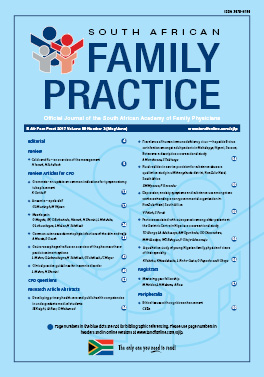Common cutaneous dermatophyte infections of the skin and nails
Keywords:
Tinea pedis, Tinea corporis, Tinea capitis, Tinea crusis, Tinea unguium, pharmacotherapy
Abstract
Superficial fungal infections occur in approximately 20% of the population. Dermatophyte infections are mainly caused by organisms from the Trichophyton, Epidermophyton, and Microsporum genera, and should not be confused with infections caused by Candida sp. since management may differ. The diagnosis of cutaneous dermatophyte infections are confirmed with potassium hydroxide (KOH) preparations as clinical diagnosis is not always accurate, and may result in inappropriate treatment. Most dermatophyte infections are successfully managed with topical antifungal preparations; however, systemic therapy provides an increased cure rate and reduces re-occurrence. This review focuses on the most common dermatophyte infections seen by South African health-care providers and briefly describes the available treatment options, which may differ from agents used elsewhere in the world.
Section
Review Articles
By submitting manuscripts to SAFP, authors of original articles are assigning copyright to the South African Academy of Family Physicians. Copyright of review articles are assigned to the Publisher, Medpharm Publications (Pty) Ltd, unless otherwise specified. Authors may use their own work after publication without written permission, provided they acknowledge the original source. Individuals and academic institutions may freely copy and distribute articles published in SAFP for educational and research purposes without obtaining permission.

